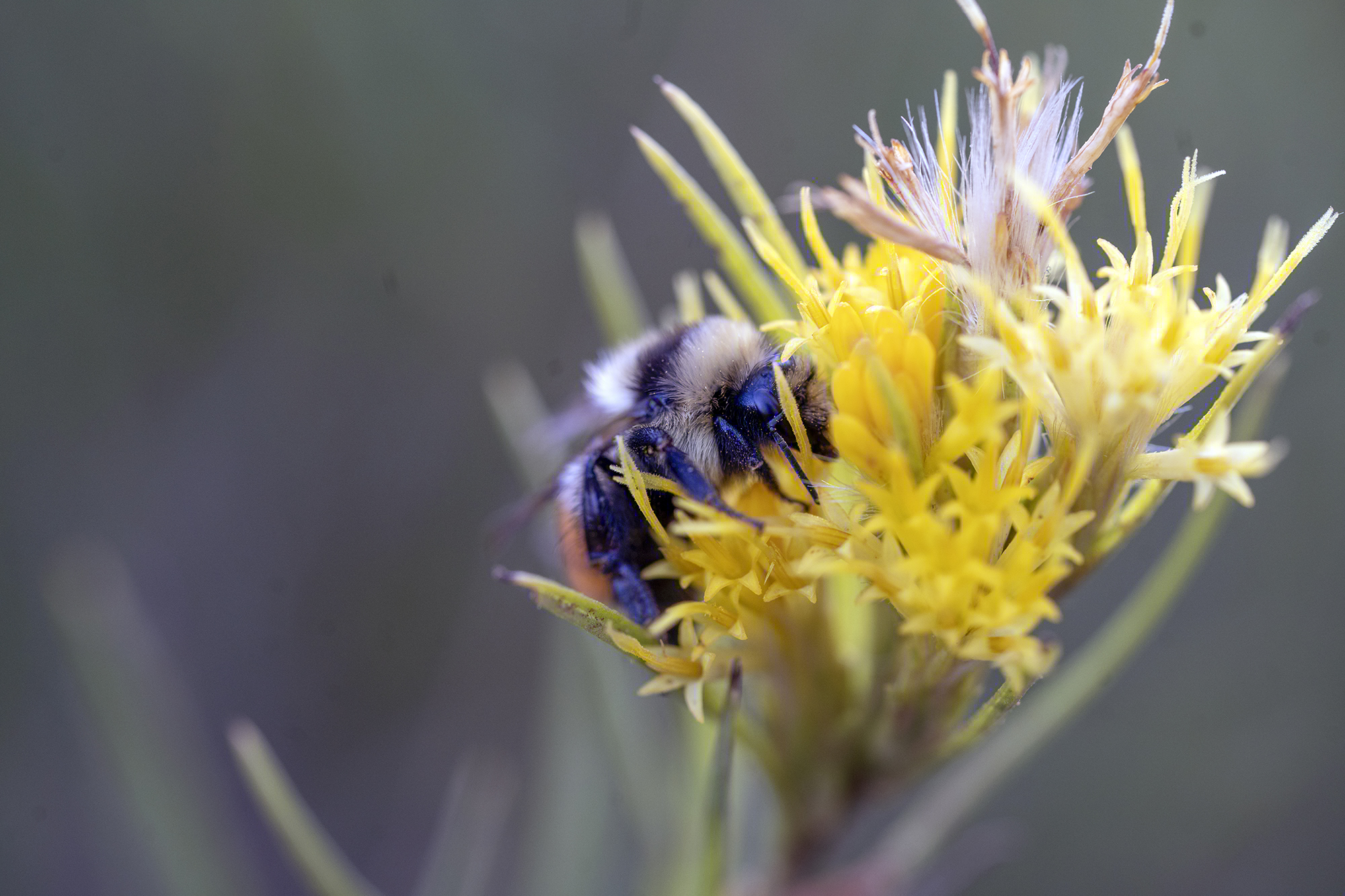
Bees and other native pollinators are found across all major ecozones in Utah, from arid desert to high alpine. They provide a myriad of benefits, such as facilitating reproduction and genetic diversity of plants, including agricultural crops, by pollinating them across wide areas.
Like other areas of the country, however, native pollinators are becoming less common in southern Utah. Increasing risk from habitat loss and fragmentation, pesticide use, land development, warming temperatures, and severe drought has led to the potential listing of some species, such as the western bumble bee (Bombus occidentalis) and monarch butterfly (Danaus plexippus), under the Endangered Species Act or other protections.
The Utah Pollinators Pursuit project (UPP), a four-year collaboration between the Utah Division of Wildlife Resources, Sageland Collaborative, Utah State University, and Wild Bee Project, is trying to reverse that trend. The project collects information on local pollinators and their habitats with the goal of preventing Endangered Species listings and gathering data to inform better wildlife management decisions.
The project relies on a network of volunteers to submit observations, including photos and notes, through a smartphone or tablet device. It is especially interested in receiving observations of bumblebees, which have declined by an estimated 41% across the West. Some species are regionally rare or are disappearing from some areas. In Grand Staircase-Escalante National Monument (GSENM), which is home to an astonishing 660 species of bees, these observations are critical to monitoring population trends over time. Reduction in protection status or size of the Monument would have implications for bee population health and diversity.
Observations of butterflies such as monarchs are also important to UPP, at all life stages: eggs, caterpillars, chrysalids, and adults. Monarchs have been impacted by a decline in milkweed (Asclepias spp.), a plant they require to complete their life cycle. The project also seeks to document occurrences of other rare butterflies such as the desert green hairstreak (Callophyrs sheridanii comstocki) and Ellis’ dotted blue (Euphilotes ellisii ellisii), both of which have the potential to occur in GSENM.
Aside from submitting observations, UPP is also recruiting volunteers to conduct complete habitat assessments, wherein volunteers will be matched with a specific site to visit 2-3 times during the season. Volunteers are responsible for reporting observations on vegetation at the site and searching for monarch eggs and caterpillars.
These “citizen science” efforts have been extremely influential in providing large data sets to researchers and policy makers that were previously very time- and labor-intensive to obtain. With climate change and drought affecting ecosystems across Utah and GSENM, having more information on the distribution and trends in pollinator populations will allow for better understanding of and management for changes to come.
To participate, download the Survey123 app on any GPS-enabled device, and visit the Utah Pollinator Pursuit website at https://www.utahpollinatorpursuit.org/.
And check out the film “The Bees of Grand Staircase-Escalante”.
[Photo credit Alysha Lundgren, St. George News]

